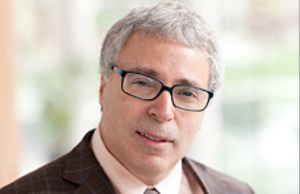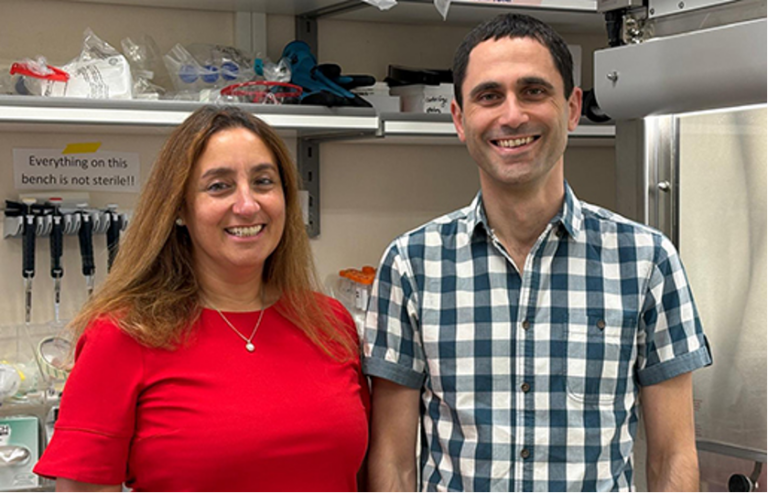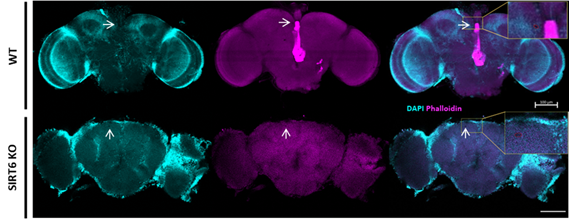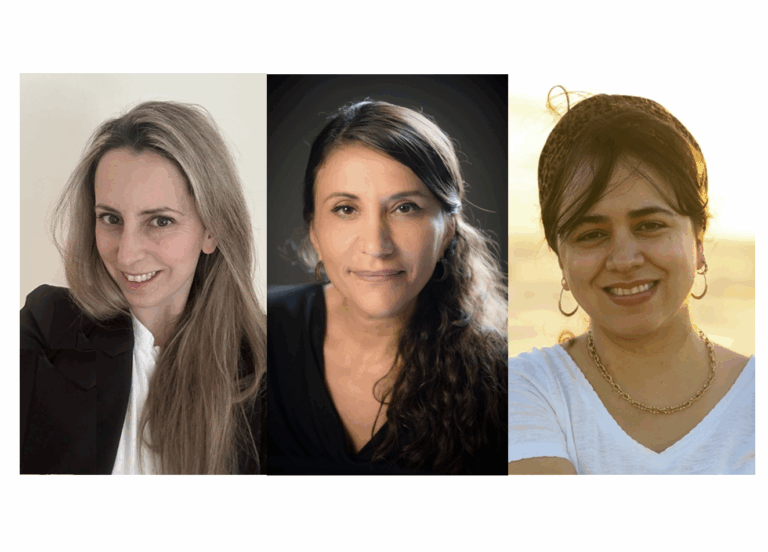USA : Dr Nir Barzilai (Technion, Hadassah), "trouver les facteurs protecteurs des maladies liées à l’âge". Vidéo

[:fr]Sciences et Avenir. Cheveux gris et chemise bleue, Nir Barzilai a le regard franc et la blague facile. Il fredonne Joe Dassin, Adamo ou France Gall. « Si un jour j’ai la maladie d’Alzheimer, j’aimerais que ma famille me fasse écouter des chansons françaises car ça stimule la mémoire à long terme ! », assure-t-il, facétieux. Alzheimer, il compte pourtant bien y échapper, grâce à un traitement unique qui préviendrait d’une manière globale les maladies liées à l’âge.
Né en Israël, le Dr Barzilai a été médecin dans les Forces de défense israéliennes. Il est diplômé de la Faculté de médecine du Technion et a complété sa formation en médecine interne au CHU Hadassah, à Jérusalem. Il est directeur fondateur de l’Institute for Aging Research de l’Albert Einstein College of Medicine de New York (Etats-Unis), Nir Barzilai espère mettre au point un traitement unique qui préviendrait les maladies liées à l’âge.
Avec un groupe de chercheurs spécialistes du vieillissement, il tente en effet de convaincre la FDA (Food and Drug Administration), l’agence sanitaire américaine, que le vieillissement et ses maladies associées doivent être considérés comme une nouvelle cible pour favoriser le développement de traitements. Autrement dit — et pour la première fois — que vieillir est une pathologie que l’on peut combattre. « Un nouveau paradigme », affirme-t-il.
Dans les couloirs de l’Albert Einstein College of Medicine, paquebot de verre posé sur une pelouse verdoyante du Bronx, au nord-est de Manhattan, Nir Barzilai, considéré comme une sommité mondiale dans son domaine, court d’un rendez-vous à l’autre. À son agenda est inscrite la mise au point d’un essai clinique unique au monde qui visera à montrer « qu’une molécule peut retarder l’apparition de toutes les maladies dont l’incidence augmente avec l’âge ». Son nom : la metformine, un médicament très connu qui diminue la résistance à l’insuline dans le traitement du diabète de type 2.
« J’étais sceptique au départ, confie sa collaboratrice Sofiya Milman, professeure assistante, mais les études qui montrent que la metformine protège contre le cancer, les maladies cardio-vasculaires et toute cause de mortalité m’ont convaincue. » Même si son mécanisme est encore inconnu.
Une capacité à faire ce que l’on veut sans peur
En investisseur prévoyant, Nir Barzilai a déjà cofondé la start-up CohBar pour développer de futurs médicaments contre le vieillissement. Mais pour l’heure, l’objectif n’est pas de faire fortune. L’étude TAME (Targeting Aging with METformin) est financée par une association à but non lucratif, l’AFAR (American Federation for Aging Research). « Personne ne gagnera d’argent si ce médicament prouve son efficacité car la metformine est un générique qui coûte quelques centimes la dose seulement », assure le chercheur. Nir Barzilai sort de la poche de sa blouse un flacon du médicament, qu’il s’auto-administre tous les jours. « C’est un hasard, j’ai une prédisposition pour le diabète ! » lance-t-il dans un sourire. Cette vocation de médecin-pionnier lui vient, selon lui, d’une « interaction gènes-environnement »
Né à Haïfa en Israël en 1955, d’une mère russe et d’un père tchécoslovaque, Nir Barzilai appartient à une famille comptant beaucoup d’infirmières — « dont ma mère » — et de médecins — « dont mon père, que j’accompagnais dans ses tournées ». Jeune recrue, il rejoint l’armée israélienne comme instructeur médical et participe, avec les forces spéciales, au fameux « raid sur Entebbe » (Ouganda) en 1976 qui permit la libération d’une centaine d’otages d’un avion d’Air France détourné. De ces années d’action, Nir Barzilai retient « la capacité à faire ce que l’on souhaite, sans peur »
Après son diplôme de médecine interne, une bourse lui permet d’intégrer l’université Yale (États-Unis) où il rencontre sa future femme, avocate, et trouve sa voie. « J’ai détesté la manière dont la médecine était pratiquée aux États-Unis où aucun praticien n’ose prescrire de l’aspirine de peur d’être poursuivi en justice. Cela m’a décidé à faire de la recherche. » Il étudie alors le mécanisme de plusieurs médicaments qui font baisser la glycémie chez les diabétiques… dont la metformine.
Lorsqu’il décroche, à 38 ans, un poste au prestigieux Albert Einstein College of Medicine, il repère dans le quartier du Bronx une cohorte de plus de 600 juifs ashkénazes d’une longévité exceptionnelle, âgés de 95 à 112 ans.
Le médecin passe alors ces centenaires et leurs familles au crible et identifie deux particularités génétiques « associées à une protection cardio-vasculaire », preuve qu’il existerait bien des facteurs protecteurs des maladies liées à l’âge ! Mais le « moment Eurêka » surviendra plus tard, en Espagne, lors d’une conférence internationale sur la biologie du vieillissement, en 2014 : « une étude montrait que les personnes obèses et diabétiques sous traitement (de metformine) avaient une mortalité plus faible que les personnes en bonne santé sans diabète ! »
Nir Barzilai et une dizaine de chercheurs dont James Kirkland, directeur du Center of Aging de la Mayo Clinic (Minnesota), commencent alors leur action de lobbying auprès de la FDA, contournant les obstacles. L’absence de biomarqueurs du vieillissement, quantifiables et mesurables lors d’essais cliniques, empêche la validation d’un médicament ? Qu’à cela ne tienne ! Les chercheurs adaptent leur vocabulaire, parlant de « comorbidités» (troubles associés à une maladie) plutôt que de « vieillissement ». Nir Barzilai assume le tour de passe-passe : « Peu importe comment la FDA l’appelle, tant qu’on peut le retarder ! » Et les premières réunions avec la FDA se révèlent, pour l’heure, plutôt positives. « Nir est un joueur à avoir dans son équipe, affirme James Kirkland. Il travaille jour et nuit et en dix ans, jamais je ne l’ai vu de mauvaise humeur !»
La cause qu’il défend le pousse à se mettre en avant
Pour défendre sa cause, Nir Barzilai n’hésite plus à se mettre en avant en acceptant, par exemple, d’être le héros d’un documentaire du réalisateur Ron Howard (Apollo13, Da Vinci Code…). « Depuis, le téléphone ne cesse de sonner. Tant mieux ! Si quelqu’un veut mettre des millions de dollars sur la table pour TAME, je suis preneur. » Seuls sa fille, en thèse d’informatique, et son fils, musicien, parviennent à lui changer les idées. « Ils m’ont obligé à m’intéresser à d’autres domaines que la recherche ! »
Son rêve ? Que chacun puisse vivre en bonne santé, « 85 ans environ », avant de mourir, rapidement. Sans fantasme de jeunesse éternelle. Si, si, il l’assure : « Vieillir, c’est la vie… »
Source Sciences et Avenir, par Héléna Sender[:en]sciencemag.org. On a blazingly hot morning this past June, a half-dozen scientists convened in a hotel conference room in suburban Maryland for the dress rehearsal of what they saw as a landmark event in the history of aging research. In a few hours, the group would meet with officials at the U.S. Food and Drug Administration (FDA), a few kilometers away, to pitch an unprecedented clinical trial—nothing less than the first test of a drug to specifically target the process of human aging.
“We think this is a groundbreaking, perhaps paradigm-shifting trial,” said Steven Austad, chairman of biology at the University of Alabama, Birmingham, and scientific director of the American Federation for Aging Research (AFAR). After Austad’s brief introductory remarks, a scientist named Nir Barzilai tuned up his PowerPoint and launched into a practice run of the main presentation.
Barzilai is a former Israeli army medical officer and head of a well-known study of centenarians based at the Albert Einstein College of Medicine in the Bronx, New York. To anyone who has seen the ebullient scientist in his natural laboratory habitat, often in a short-sleeved shirt and always cracking jokes, he looked uncharacteristically kempt in a blue blazer and dress khakis. But his practice run kept hitting a historical speed bump. He had barely begun to explain the rationale for the trial when he mentioned, in passing, “lots of unproven, untested treatments under the category of anti-aging.” His colleagues pounced.
“Nir,” interrupted S. Jay Olshansky, a biodemographer of aging from the University of Illinois, Chicago. The phrase “anti-aging … has an association that is negative.”
“I wouldn’t dignify them by calling them ‘treatments,’” added Michael Pollak, director of cancer prevention at McGill University in Montreal, Canada. “They’re products.”
Barzilai, a 59-year-old with a boyish mop of gray hair, wore a contrite grin. “We know the FDA is concerned about this,” he conceded, and deleted the offensive phrase.
Then he proceeded to lay out the details of an ambitious clinical trial. The group—academics all—wanted to conduct a double-blind study of roughly 3000 elderly people; half would get a placebo and half would get an old (indeed, ancient) drug for type 2 diabetes called metformin, which has been shown to modify aging in some animal studies. Because there is still no accepted biomarker for aging, the drug’s success would be judged by an unusual standard—whether it could delay the development of several diseases whose incidence increases dramatically with age: cardiovascular disease, cancer, and cognitive decline, along with mortality. When it comes to these diseases, Barzilai is fond of saying, “aging is a bigger risk factor than all of the other factors combined.”
But the phrase “anti-aging” kept creeping into the rehearsal, and critics kept jumping in. “Okay,” Barzilai said with a laugh when it came up again. “Third time, the death penalty.”
The group’s paranoia about the term “anti-aging” captured both the audacity of the proposed trial and the cultural challenge of venturing into medical territory historically associated with charlatans and quacks. The metformin initiative, which Barzilai is generally credited with spearheading, is unusual by almost any standard of drug development. The people pushing for the trial are all academics, none from industry (although Barzilai is co-founder of a biotech company, CohBar Inc., that is working to develop drugs targeting age-related diseases). The trial would be sponsored by the nonprofit AFAR, not a pharmaceutical company. No one stood to make money if the drug worked, the scientists all claimed; indeed, metformin is not only generic, costing just a few cents a dose, but belongs to a class of drugs that has been part of the human apothecary for 500 years. Patient safety was unlikely to be an issue; millions of diabetics have taken metformin since the 1960s, and its generally mild side effects are well-known.
Finally, the metformin group insisted they didn’t need a cent of federal money to proceed (although they do intend to ask for some). Nor did they need formal approval from FDA to proceed. But they very much wanted the agency’s blessing. By recognizing the merit of such a trial, Barzilai believes, FDA would make aging itself a legitimate target for drug development.
By the time the scientists were done, the rehearsal—which was being filmed for a television documentary—had the feel of a pep rally. They spoke with unguarded optimism. “What we’re talking about here,” Olshansky said, “is a fundamental sea change in how we look at aging and disease.” To Austad, it is “the key, potentially, to saving the health care system.”
As the group piled into a van for the drive to FDA headquarters, there was more talk about setting precedents and opening doors. So it was a little disconcerting when Austad led the delegation up to the main entrance of FDA—and couldn’t get the door open.
Barzilai, who is quick to see the humor (black or otherwise) in any situation, leaned over to a colleague and muttered, “I hope it’s not symbolic.”
AMIABLY AGGRESSIVE, Barzilai credits his military service with shaping his scientific temperament and administrative mettle. “The most helpful years in my life were in the Israeli army,” he says. Born in Haifa in 1955, he joined the military as a medical instructor and in 1976 served as a medical officer in the special forces raid on Entebbe, Uganda, that freed 102 hostages from a hijacked Air France airliner. (“I did nothing,” he claims. “I happened to be there.”) By his early 20s, he had been decorated for his military service and had become chief medic of the Israeli army. “I had an office, a secretary, a car, and I would do inspections with a helicopter,” he recalls. “It’s a whole lifetime, okay? With a lot of lessons. But the major thing is that you realize that you can do a lot! If it doesn’t frighten you, you can do a lot.”
After obtaining his M.D. in internal medicine from the Technion-Israel Institute of Technology in 1985, Barzilai focused on endocrinology and metabolism during several research stints in the United States. He had every intention of returning to Israel, but a fellowship at Yale University in 1987–88 upended his plans. At Yale, he studied the mechanism of several oral drugs that lowered blood sugar in diabetics. One was metformin. During his time in New Haven, Barzilai ended up meeting his wife-to-be on a blind date. Metformin, he laughs, “is the reason I’m in the United States!”
In 1993, he landed a position at Einstein and discovered, in nearby neighborhoods, a cohort of unusually long-lived Ashkenazi Jews. Barzilai and his Einstein colleagues tracked down and studied more than 600 of the “oldest old,” ranging in age from 95 to 112 years. Since then, the researchers have collected data on the genetics, epigenetics, blood chemistry, and lifestyles of both centenarians and their children…
Full article on sciencemag.org Sept 2015[:]







